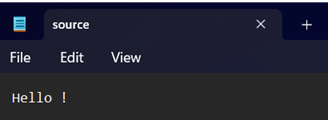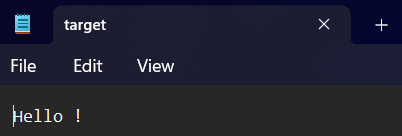Copy Data from One File to Another in JavaJava provides a robust set of libraries for file operations, making it relatively simple to perform tasks like copying data from one file to another. This process is essential in various scenarios, such as data backup, log file processing, and more. In this article, we'll guide you through the steps to copy data from one file to another using Java. Before diving into the code, let's understand the basic steps involved in copying data from one file to another:
Opening Files for Reading and WritingJava provides several classes for file operations. For this task, we'll primarily use FileInputStream for reading and FileOutputStream for writing. Reading and Writing DataTo copy data from the source file to the target file, we'll read a chunk of data from the source and write it to the target until there's no more data to read. Handling ExceptionsFile operations can throw exceptions, so it's important to handle them properly. We'll use a try-catch block to handle any potential exceptions. Putting it All TogetherHere's the complete code to copy data from one file to another: Understanding File StreamsIn Java, file operations are typically performed using streams. A stream is a sequence of data elements that are made available over time. It can be used to read data from a source (input stream) or write data to a destination (output stream). Input Stream: Used for reading binary or text data from a source, such as a file. In this guide, we'll use FileInputStream for reading. Output Stream: Used for writing binary or text data to a destination, such as a file. In this guide, we'll use FileOutputStream for writing. Error Handling and File Existence CheckBefore attempting to copy, it's wise to check if the source file actually exists. Also, ensure the target directory exists and, if not, create it. Buffered Streams for EfficiencyYou can improve the performance of your file operations by using buffered streams. These classes provide buffering of the data to be read or written, which can greatly speed up the process. FileCopy.java Output: Enter source file name: source.txt Enter target file name: target.txt Done writing Sourcefile: 
Targetfile: 
Copying data from one file to another is a common operation in many applications. With Java's built-in file handling capabilities, it's a straightforward task. Remember to handle exceptions properly and close files after you're done with them to ensure efficient resource management.
Next TopicDead Code in Java
|
 For Videos Join Our Youtube Channel: Join Now
For Videos Join Our Youtube Channel: Join Now
Feedback
- Send your Feedback to [email protected]
Help Others, Please Share









